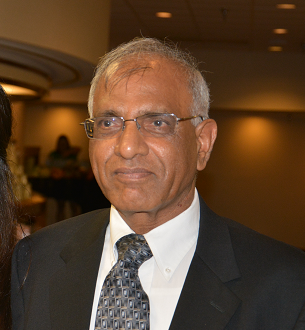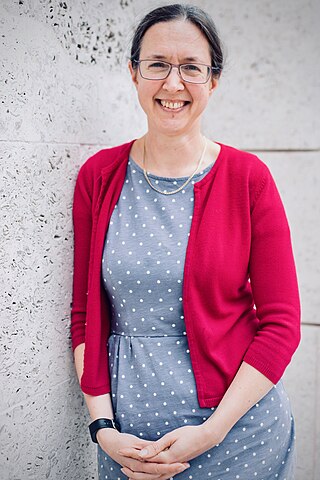Related Research Articles

Thomas Eugene Everhart FREng is an American educator and physicist. His area of expertise is the physics of electron beams. Together with Richard F. M. Thornley he designed the Everhart–Thornley detector. These detectors are still in use in scanning electron microscopes, even though the first such detector was made available as early as 1956.

The Department of Materials at the University of Oxford, England was founded in the 1950s as the Department of Metallurgy, by William Hume-Rothery, who was a reader in Oxford's Department of Inorganic Chemistry. It is part of the university's Mathematical, Physical and Life Sciences Division

George David William Smith FRS, FIMMM, FInstP, FRSC, CEng is a materials scientist with special interest in the study of the microstructure, composition and properties of engineering materials at the atomic level. He invented, together with Alfred Cerezo and Terry Godfrey, the Atom-Probe Tomograph in 1988.

David John Hugh Cockayne FRS FInstP was Professor in the physical examination of materials in the Department of Materials at the University of Oxford and professorial fellow at Linacre College from 2000 to 2009. He was the president of the International Federation of Societies for Microscopy from 2003 till 2007, then vice-president 2007 to 2010.

Michael Paul Fourman FBCS FRSE is Professor of Computer Systems at the University of Edinburgh in Scotland, UK, and was Head of the School of Informatics from 2001 to 2009.
Roger John Cashmore is the chair of the United Kingdom Atomic Energy Authority. Previously he was principal of Brasenose College, Oxford, and professor of experimental physics at the University of Oxford. His interests include the origin of the masses of particles and the Higgs boson.

The Department of Engineering Science is the engineering department of the University of Oxford. It is part of the university's Mathematical, Physical and Life Sciences Division. The department was ranked third best institute in the UK for engineering in the 2021 Research Excellence Framework.

Junuthula N. Reddy is a Distinguished Professor, Regent's Professor, and inaugural holder of the Oscar S. Wyatt Endowed Chair in Mechanical Engineering at Texas A&M University, College Station, Texas, USA.[1] He is an authoritative figure in the broad area of mechanics and one of the researchers responsible for the development of the Finite Element Method (FEM). He has made significant seminal contributions in the areas of finite element method, plate theory, solid mechanics, variational methods, mechanics of composites, functionally graded materials, fracture mechanics, plasticity, biomechanics, classical and non-Newtonian fluid mechanics, and applied functional analysis. Reddy has over 620 journal papers and 20 books and has given numerous national and international talks. He served as a member of the International Advisory Committee at ICTACEM, in 2001 and keynote addressing in 2014.[2][3]

Sir Anthony Kevin Cheetham is a British materials scientist. From 2012 to 2017 he was Vice-President and Treasurer of the Royal Society.

Sir Colin John Humphreys, is a British physicist and Christian apologist. He is the Professor of Materials Science at Queen Mary University of London.
C. Barry Carter is a professor of Materials Science and Engineering at the University of Connecticut in Storrs, Connecticut. He is a CINT Distinguished Affiliate Scientist at Sandia National Laboratories and editor-in-chief of the Journal of Materials Science. Carter's research areas of focus include Transmission Electron Microscopy and Atomic-force microscopy.

Brian Leonard Eyre CBE, FRS, FREng was a British material scientist, Chief Executive of the United Kingdom Atomic Energy Authority (UKAEA) and Professor at the University of Liverpool. He was also a visiting scholar at the University of Oxford and University College London.

Narinder Kumar Gupta is a research scientist, educator, and engineer. Born 22 August 1942 in Mirpur, Jammu and Kashmir, India, is Professor of Mechanics at the Indian Institute of Technology in Delhi. Gupta works in the area of large deformations of metals and composites at low, medium and high rates of loading. His research stimulates the development of constitutive behaviour of materials, understanding of the basic mechanics of large deformation, design for crashworthiness of road and air vehicles, design for safety in defence applications and in design of metal forming processes.

George Andrew Davidson Briggs is a British scientist. He is Professor of Nanomaterials in the Department of Materials at the University of Oxford. He is best known for his early work in acoustic microscopy and his current work in materials for quantum technologies.
The University of Oxford introduced Titles of Distinction for senior academics in the 1990s. These are not established chairs, which are posts funded by endowment for academics with a distinguished career in British and European universities. However, since there was a limited number of established chairs in these universities and an abundance of distinguished academics it was decided to introduce these Titles of Distinction. 'Reader' and the senior 'Professor' were conferred annually.
Ramarathnam Narasimhan is an Indian materials engineer and a professor at the Department of Mechanical Engineering of the Indian Institute of Science. He is known for his pioneering researches on fracture mechanics and is an elected fellow of the Indian Academy of Sciences, Indian National Science Academy and the Indian National Academy of Engineering. The Council of Scientific and Industrial Research, the apex agency of the Government of India for scientific research, awarded him the Shanti Swarup Bhatnagar Prize for Science and Technology, one of the highest Indian science awards for his contributions to Engineering Sciences in 1999.

Isaac Elishakoff is a Distinguished Research Professor in the Ocean and Mechanical Engineering Department in the Florida Atlantic University, Boca Raton, Florida. He is a figure in the area of mechanics. He has made several contributions in the areas of random vibrations, solid mechanics of composite material, semi-inverse problems of vibrations and stability, functionally graded material structures, and nanotechnology.

Gerhard Alfred Holzapfel is an Austrian scientist, (bio)mechanician. He is currently a professor of Biomechanics and Head of the Institute of Biomechanics at Graz University of Technology, Austria, since 2007. He is also the International Chair of Biomechanics at the Norwegian University of Science and Technology (NTNU), and a visiting professor at the School of Mathematics and Statistics, University of Glasgow, Scotland. He was a professor of biomechanics at KTH Royal Institute of Technology in Stockholm, Sweden, for 9 years until 2013. He is the co-founder and co-editor-in-chief of the international scientific journal Biomechanics and Modeling in Mechanobiology by Springer Nature since the first issue published in June 2002.

Rachel Angharad Oliver is a Professor of Materials Science at the University of Cambridge and a fellow of Robinson College, Cambridge. She works on characterisation techniques for gallium nitride materials for dark-emitting diodes and laser diodes.
Fionn Patrick Edward Dunne is a Professor of Materials Science at Imperial College London and holds the Chair in Micromechanics and the Royal Academy of Engineering/Rolls-Royce Research Chair. Professor Dunne specialises in computational crystal plasticity and microstructure-sensitive nucleation and growth of short fatigue cracks in engineering materials, mainly Nickel, Titanium and Zirconium alloys.
References
- ↑ Professor Alexander Korsunsky — Solid Mechanics and Materials Engineering
- ↑ "Professor Alexander Korsunsky, DPhil MA CPhys MInstP". University of Oxford.
- ↑ "Alexander M. Korsunsky". Elsevier.